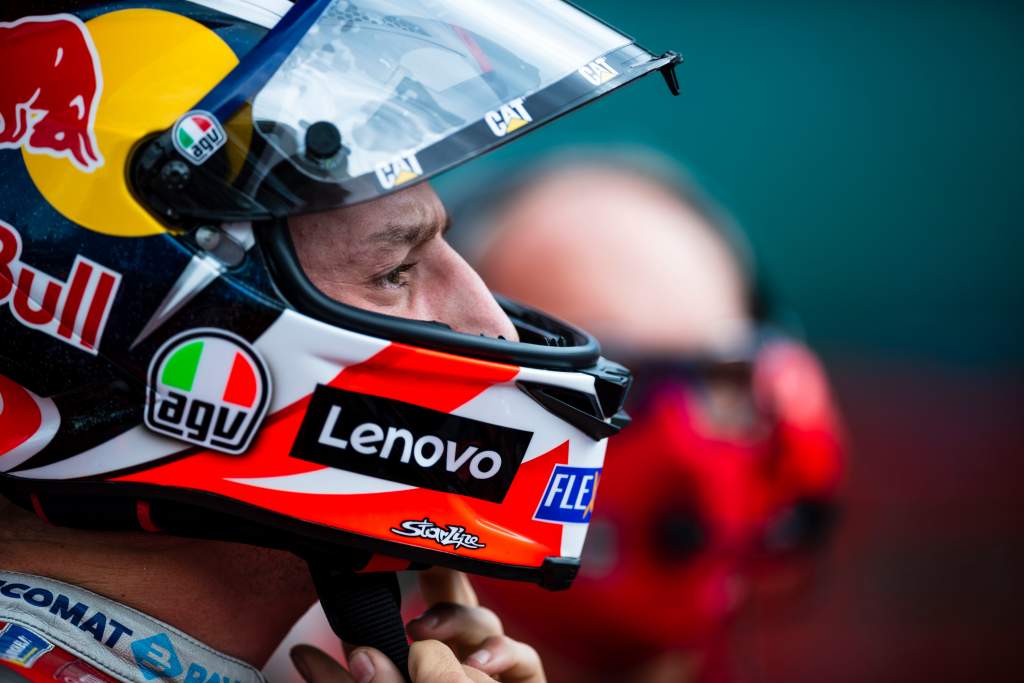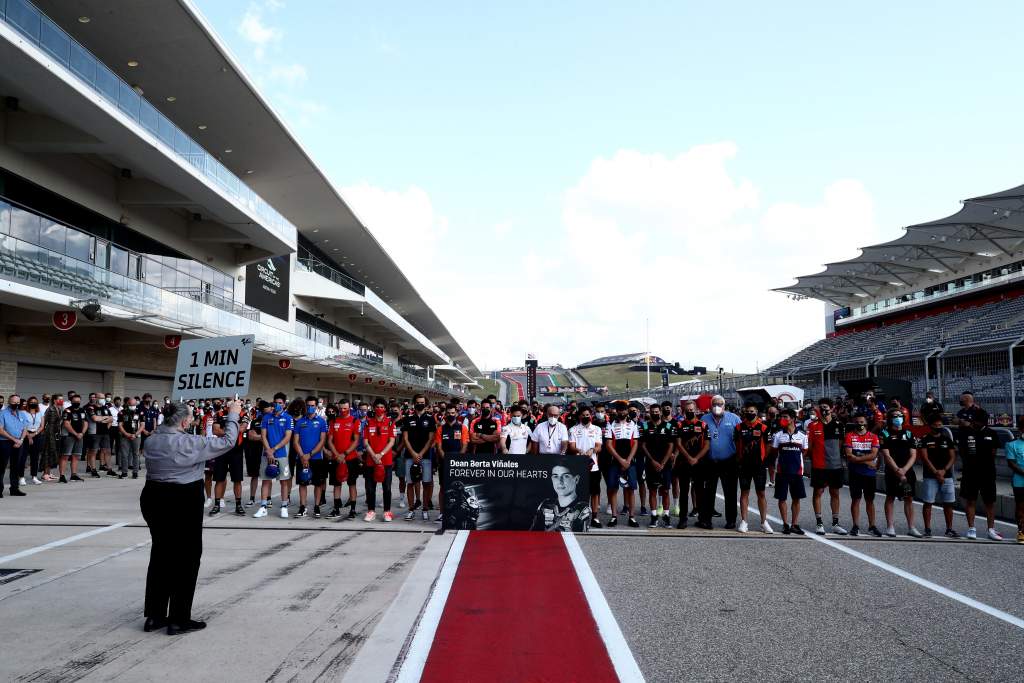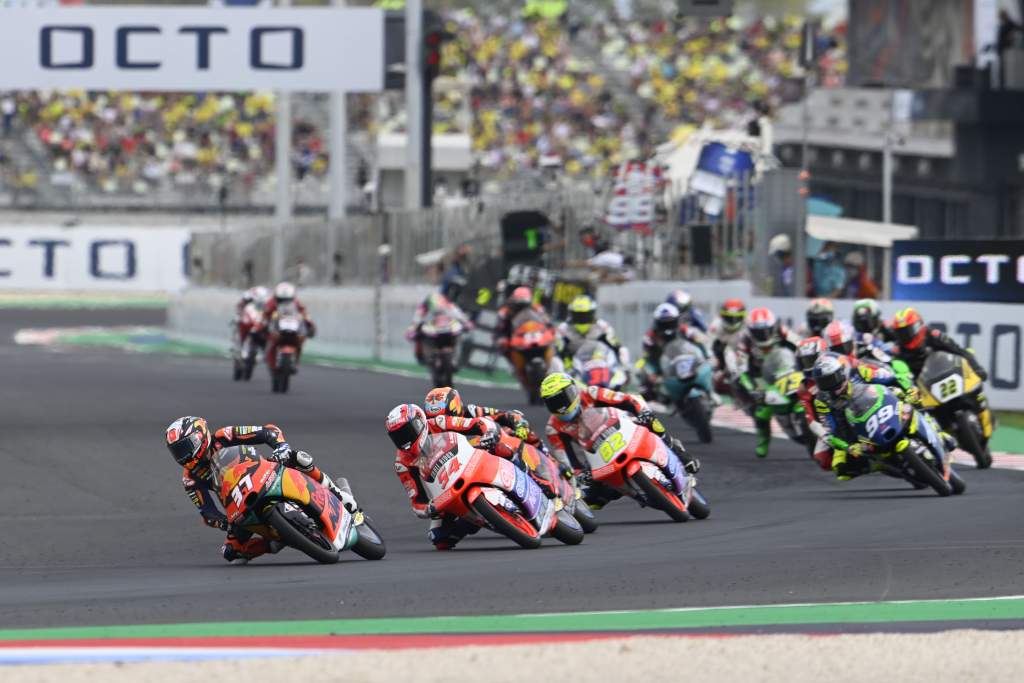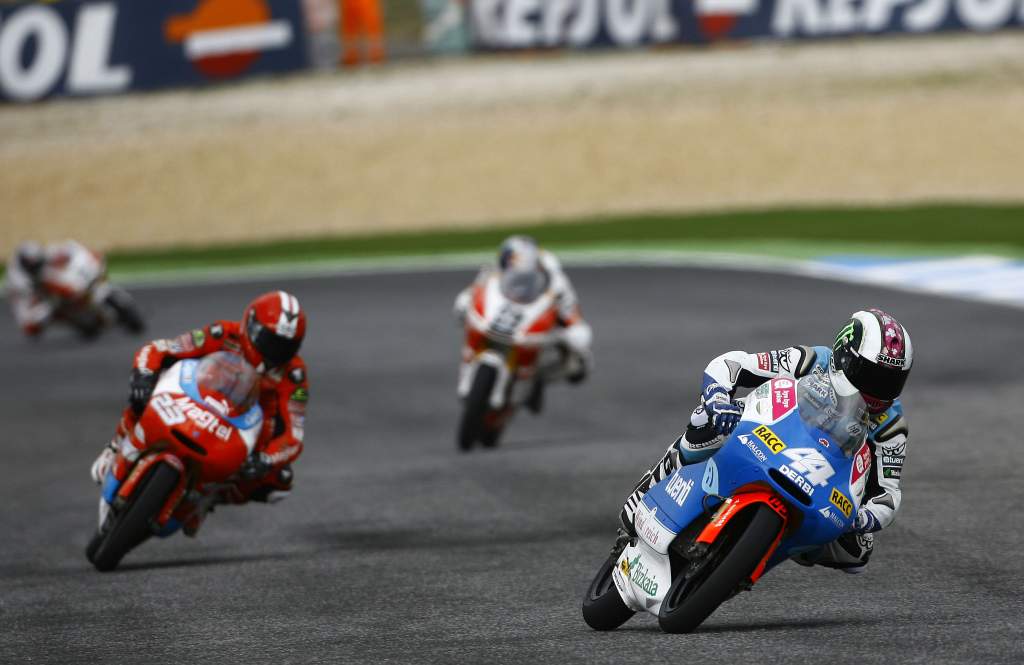Multiple riders on the MotoGP grid have insisted that changes must be made to their sport to protect those who participate it, as the tragic death of Dean Berta Vinales last weekend in a World Supersport 300 race at Jerez has drawn fresh attention to the risk posed by small-capacity racing in recent months and years.
The 15-year-old is the third racer on series promoter Dorna’s ‘Road to MotoGP’ to die in similar circumstances this year, after Jason Dupasquier and Hugo Millan lost their lives at Mugello in Moto3 practice and in a European Talent Cup race at Motorland Aragon respectively.
“It’s beyond terrible what is happening. It’s atrocious this year, with so many young lives being lost” :: Jack Miller
All three riders were struck by others while falling in a pack – something that has become increasingly commonplace as the smaller classes have become more and more bunched together by similar-spec machines.
As yet another tragedy rocking the paddock this weekend with Vinales’ death – one that has struck particularly close to home due to his relationship with older cousin and factory Aprilia MotoGP rider Maverick Vinales, who will sit out this weekend’s race – a number of riders made impassioned pleas to the organisers ahead of this weekend’s Grand Prix of the Americas in Texas.

“The sport is the sport; it’s hard and it’s brutal,” explained Ducati rider Jack Miller. “That’s part of the beauty of it. It’s so raw. At the end of the day it’s dangerous, and these things can happen.
“There is no easy way around that, but it’s beyond terrible what is happening. It’s atrocious this year, with so many young lives being lost. Looking at Dean, born in 2006 – it’s not long ago. The poor kid didn’t get to live a full life and that’s terrible.
“There has to be a big step taken in looking at the safety, at the way these races go. This can’t continue on. This year has been especially bad, and this can’t continue. We can’t have three young kids losing their lives in the space of nine months.
“I think I speak for everyone when I say that I’m sick and tired of going to minutes of silence for kids that were so, so young.”

Where that change needs to come from is pretty clear according to a number of riders, with Aleix Espargaro among those echoing an opinion posited earlier this season by The Race that the relatively-slow bikes of both Moto3 and World Supersport 300 make bunch racing (and the subsequent multiple-rider crashes) inevitable.
“We need to brainstorm and try to improve something,” stressed the Aprilia rider. “The biggest problem isn’t the three deaths in the past months, which is already a big problem – the biggest problem is where we are going to. This is what worries me.
“We have a lot of close racing in the smaller classes, the bikes are not powerful, and the stability is very high so it’s not difficult to be fast with them.
“We can see for example in Moto3, for me Pedro Acosta is much more talented than the other riders, but he cannot go away in the races. This is a clear example.
“By having super-close races like you see in small classes all around Europe, there are a lot of things that we can discuss to improve it.

“Hopefully with Dorna and all the MotoGP riders we can try to brainstorm it and try to improve it. We can raise the age, because in some classes they are still a bit young, but there is a lot more we can do too.”
His sentiments were echoed by Suzuki rider Alex Rins, who also admitted that the risks of close racing means that these sort of crashes will continue to happen – and that the solution might be to make bikes that are faster and harder to ride.
“In the past, I have left it to them [the organisers],” he admitted. “Of course when things happen during the year you think about them, but I didn’t think a lot. But now, thinking a bit more, maybe they need to do something different.
“That category [WSSP300] is very similar to Moto3, the bikes are all so close. In Moto2 or MotoGP it happens, but it happens less. All three moments this year; in Mugello was in a big group, Dean’s one was in a big group.
“Maybe we need to make the bikes a little more powerful. It’s difficult to say because in theory if you make the bike more powerful the bike can be even stronger – but we need to do something different.”
Honda rider Pol Espargaro stressed it was “super difficult to say something this fast and this easy, to improve it – [because] it’s not easy and it’s not simple”.
But he agreed the power level was one factor to look at, while also bringing up “the young age of the riders and the lower experience of them” – even though he feels the actual level of competition in those classes is sky-high.
“If we want to improve the situation, one thing for me is maybe to raise the age, [so that] they are going to be more aware of what they are doing,” said Espargaro.
“Even if I think they are super talented, and they know so much what they are doing, they are so fast.
“Or raise the level of the kids’ bikes – they are too slow, and too bad for me. In 125[cc] I remember the bikes were quite aggressive and quite strong.

“A guy with no rhythm for example in the race could not follow a guy half a second faster, he would high-side. This was due to the difficulty of the bike and the power of the bike in the lowest range. So maybe this would be also a solution.
“But as I said in the beginning, it’s super difficult, and what I said is just things that maybe came in my mind.
“I think it needs to be deeply understood, the situation, and just make everything with thinking a lot on it.”




